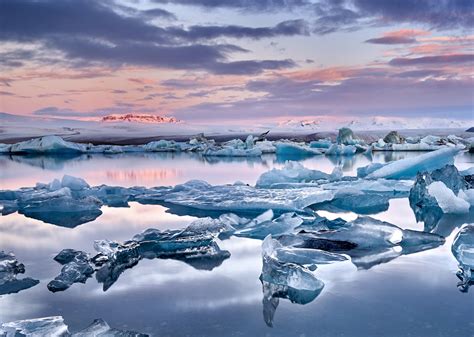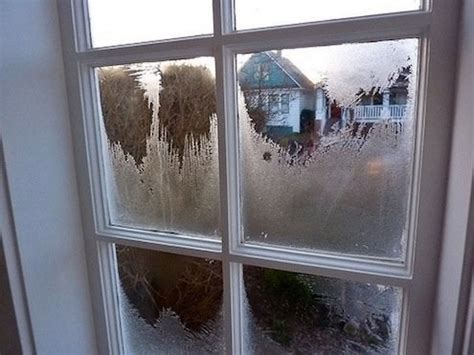Have you ever woken up to find your windows adorned with delicate patterns etched in ice?
These ephemeral and mesmerizing formations, commonly known as frost, continue to captivate our curious minds. As winter graces our landscapes and temperatures plummet, windows are transformed into canvases where nature's artistic brilliance is on full display.
But what lies beneath this enchanting phenomenon? How does frost materialize on glass surfaces, leaving us bewitched by its intricate beauty?
Crystalline or amorphous in nature, frost arises from the interaction between moisture and cold surfaces. Whether it be due to a light mist lingering in the air or the humidity within our homes, when the temperature drops, condensation forms and adheres to our windows like a delicate lace curtain.
However, frost is not simply an aesthetic marvel; it holds valuable insights into our environment. By carefully examining its patterns and formations, we can gain a better understanding of the surrounding atmospheric conditions, offering us a glimpse into the unseen world of temperature and moisture fluctuations.
Join us on a journey to decipher the enigmatic language of frost, as we unravel the whispers it carries and unveil the secrets engraved on our windows. Together, let's unlock the true essence of this natural phenomenon and explore the fascinating interplay between science, art, and the mysteries of winter.
The Science Behind Frost Formation

In this section, we will delve into the fascinating world of frost formation, shedding light on the intricate scientific processes that occur when frost appears on surfaces. By understanding the underlying principles behind this natural phenomenon, we can gain a deeper appreciation for the beauty and complexity of frost.
Frost formation is the result of a delicate interplay between temperature, moisture, and surface properties. When the air temperature drops below freezing point, the moisture in the air transforms from its gaseous form into tiny ice crystals. These ice crystals then adhere to surfaces, such as windows, in a process known as deposition.
The formation of frost is influenced by various factors, including humidity level, air movement, and the surface characteristics of the object. Higher humidity levels provide more moisture for frost formation, while stagnant air encourages the accumulation of frost. Additionally, the smoothness or roughness of a surface can affect how frost forms, with rougher surfaces providing more sites for ice crystals to attach.
- Humidity: The moisture content in the air is a crucial factor in frost formation. Higher humidity levels create conditions favorable for the accumulation of frost, as there is more moisture available for deposition.
- Air Movement: The movement of air can impact how frost forms. Still air allows for more rapid cooling and deposition, leading to thicker frost formation, while air movement may disrupt the deposition process.
- Surface Characteristics: The surface properties of an object can significantly influence frost formation. Smooth surfaces provide fewer attachment sites for ice crystals, resulting in less pronounced frost formation. In contrast, rough surfaces offer more sites for deposition, leading to thicker and more intricate frost patterns.
By studying the science behind frost formation, scientists and researchers gain insights into the fundamental principles of thermodynamics and heat transfer. This knowledge not only deepens our understanding of natural phenomena but also has practical applications in various fields, including materials science, meteorology, and climate studies.
Factors Influencing the Formation of Frost on Glass Surfaces
When it comes to comprehending the formation of frost on glass surfaces, it is crucial to consider numerous factors that play a significant role in this phenomenon. The understanding of these influencing factors can provide valuable insight into why frost forms on windows, helping us gain a deeper understanding of its occurrence and potential mitigation measures.
- Temperature: The primary factor influencing the formation of frost is the temperature of the glass surface. When the temperature drops below the freezing point, moisture in the air condenses and freezes on the surface, leading to the development of frost.
- Relative Humidity: The amount of moisture in the air, or relative humidity, also affects the formation of frost. Higher humidity levels increase the chances of frost formation, as the excess moisture in the air is more likely to condense and freeze on the glass surface.
- Wind Speed: The speed of the wind plays a crucial role in frost formation. Higher wind speeds can disrupt the formation of frost by constantly mixing the surrounding air, preventing moisture from settling on the glass surface and freezing.
- Exposure to External Elements: The exposure of glass surfaces to external factors such as rain, snow, or fog can significantly influence the formation of frost. These external elements can introduce additional moisture to the glass surface, increasing the chances of frost formation.
- Glass Composition and Thickness: The composition and thickness of the glass can also impact frost formation. Different types of glass have varying thermal conductivity, affecting how quickly the glass surface reaches the freezing point. Thicker glass may retain more heat, making it less prone to frost formation.
- Insulation and Heating: The insulation and heating properties of a building can affect the formation of frost on windows. Well-insulated buildings with efficient heating systems can minimize temperature differentials between indoor and outdoor environments, reducing the likelihood of frost formation on window surfaces.
By considering these various factors, we can better understand the complex process of frost formation on glass surfaces, allowing us to make informed choices regarding insulation, heating, and other preventative measures to mitigate the impact of frost on windows.
Decoding Various Patterns of Icy Formations

In the realm of deciphering the multitude of frost patterns that grace our glass panes during wintertime, an engaging world of interpretation beckons. Each delicate and intricate design etched onto windows holds clues to the unseen forces at play. This section endeavors to unravel the enigmatic world of frost patterns, shedding light on the boundless possibilities they present.
Implications of Frost on Energy Efficiency
The presence of frost on windows can have significant implications for energy efficiency and overall thermal performance in a building. When frost forms on windows, it can impact the insulation properties of the glass, resulting in increased heat loss and decreased energy efficiency. This phenomenon can lead to higher energy consumption and related costs, as well as potential discomfort for occupants due to temperature fluctuations.
Reduced Insulation: Frost acts as a barrier between the indoor and outdoor environments, reducing the insulation properties of the window. This can allow heat to escape more easily during cold weather, leading to increased energy usage as heating systems compensate for the heat loss. Conversely, during warmer climates, frost can also disrupt the transfer of heat from the sun, potentially causing internal spaces to overheat and requiring additional cooling efforts.
Condensation and Moisture: Frost on windows is often associated with high levels of moisture in the surrounding air. The presence of excessive moisture can lead to condensation forming on the interior surface of the windows, which not only obstructs visibility but also increases the risk of mold and mildew growth. This can have negative health implications for occupants and may require additional maintenance and ventilation measures to mitigate these issues.
Impact on Comfort: Frost on windows can create a visually appealing winter scene, but it can also lead to discomfort for occupants. The fluctuating temperatures caused by poor insulation and increased heat loss can result in uneven heating distribution, with certain areas feeling too cold while others are excessively warm. This can lead to difficulties in maintaining desired comfort levels and may require adjustments to heating or cooling systems to address these temperature disparities.
Energy Consumption and Costs: The decreased energy efficiency caused by frost on windows can have financial implications for building owners and occupants. Increased energy consumption due to higher heat loss or the need for additional cooling can result in elevated utility bills. Additionally, the potential need for added insulation, maintenance, or even window replacement to improve energy efficiency can incur extra expenses. Understanding the implications of frost on energy efficiency can help guide decisions to optimize indoor comfort and minimize energy-related costs.
Preventing the Build-up of Frost on Glass Panes

Warding off the formation of frost on window surfaces can be an effective way to promote thermal comfort and maintain a clear view outdoors during colder weather conditions. By implementing certain preventive measures, you can enhance the insulation properties of your windows and minimize the occurrence of frost accumulation, subsequently improving the overall energy efficiency of your living or working space.
1. Enhance Insulation: Strengthening the insulation of your windows plays a crucial role in mitigating frost formation. Consider upgrading your windows to double or triple-glazed options, as they provide enhanced thermal insulation and reduced heat transfer. Additionally, ensuring proper sealing around the window frames and closing any potential air leaks will aid in preventing cold air from entering your interior space.
2. Manage Indoor Humidity: Controlling the humidity levels inside your home or office can significantly contribute to minimizing frost build-up on windows. Utilize ventilation systems or exhaust fans in areas prone to moisture accumulation, such as kitchens and bathrooms, to prevent the excess release of moisture into the air. Implementing dehumidifiers in spaces with high humidity can also be beneficial in reducing condensation on window surfaces.
3. Window Treatments: Employing appropriate window treatments can assist in preventing the formation of frost. Blinds, curtains, or shades can be utilized to create a barrier between the room's interior and exterior temperatures, minimizing heat loss and condensation. Utilize insulating window films to further enhance the thermal performance of your windows and reduce the risk of frost formation.
4. Circulate Air: Enhancing air circulation near windows can aid in preventing frost formation. Use ceiling fans or portable fans to promote proper air movement around these areas, effectively reducing the likelihood of cold air settling on the glass panes. This method helps to maintain a more consistent temperature near the windows and discourages condensation from occurring.
5. External Factors: Consider external factors that may contribute to frost formation on windows. Avoid placing objects against windows, as they can obstruct the airflow and increase the likelihood of condensation. Additionally, avoid blocking heat sources near windows to ensure there is no significant difference in temperature between the interior and exterior surfaces.
By implementing these preventive measures, you can minimize the build-up of frost on your windows, ensuring optimum thermal comfort and an unobstructed view throughout the cold winter months.
Using Frost Patterns for Weather Forecasting
Unlocking the Secrets Hidden in Intricate Ice Formations
Frost patterns that decorate our windows during the chilly winter months may hold more information than meets the eye. While commonly dismissed as mere decorative patterns formed by frozen water vapor, these intricate ice formations could actually provide valuable insights into weather conditions and help us forecast future atmospheric changes.
By studying the delicate lines, crystals, and shapes that frost creates on windows, researchers have discovered patterns that correlate with specific weather phenomena. These patterns can indicate changes in air pressure, humidity levels, and temperature fluctuations. By deciphering the language of frost, scientists hope to unlock a new tool for predicting weather patterns more accurately and reliably.
One noteworthy aspect of frost patterns for weather forecasting is their ability to reveal imminent temperature changes. Different arrangements of frost crystals can indicate the approach of a cold front, signaling a drop in temperature. Alternatively, specific patterns may suggest the arrival of milder weather or even an upcoming storm. By interpreting these subtle variations, meteorologists can improve the accuracy of weather forecasts and provide more timely warnings to communities.
Moreover, frost patterns can also unveil important information about humidity levels in the atmosphere. Variations in the density and spacing of frost crystals can indicate changes in moisture content, helping researchers discern if a dry or wet spell is on the horizon. This knowledge is particularly valuable for agricultural planning and water resource management.
While frost patterns on windows have long been admired for their beauty, the realization of their potential significance in weather forecasting opens up a new realm of possibilities. By delving into the language of frost, scientists are paving the way for more advanced prediction models and improved understanding of our ever-changing climate.
FAQ
Why does frost form on windows?
Frost forms on windows when the temperature of the window surface drops below the freezing point and the moisture in the air condenses onto the glass surface in the form of small ice crystals.
What causes frost to appear in intricate patterns on windows?
The intricate patterns of frost on windows are created by variations in temperature across the glass surface. When the glass is colder in certain areas, the moisture in the air condenses and freezes into unique patterns and shapes.
Can frost on windows be harmful in any way?
Frost on windows itself is not harmful. However, if frost builds up excessively, it can obstruct visibility and affect the efficiency of windows. Additionally, when frost melts, it can create water droplets that may cause damage to wooden window frames or contribute to mold growth.
How can I prevent frost from forming on my windows?
To prevent frost formation on windows, you can improve insulation by sealing any cracks or gaps around the windows. Properly insulating the windows can help maintain a warmer temperature on the glass surface, preventing frost from forming. Alternatively, using window coverings such as curtains or blinds can also help to reduce the temperature difference between the room and the window surface, minimizing frost formation.
Is there any significance or symbolism associated with frost on windows?
Frost on windows is often associated with winter and cold weather. In literature and art, it is sometimes used to symbolize solitude, loneliness, or the passage of time. Additionally, frost patterns on windows can be aesthetically pleasing and inspire creativity and artistic interpretation.
Why does frost form on windows?
Frost forms on windows when the temperature on the glass surface drops below the dew point temperature of the surrounding air. This causes the water vapor in the air to condense and freeze on the window, forming frost.
Can frost on windows cause any damage?
Frost on windows itself does not cause any damage. However, when the frost melts, the water can seep into cracks in the window frame, causing damage over time. It is important to remove the frost carefully to avoid any potential damage to the windows.




